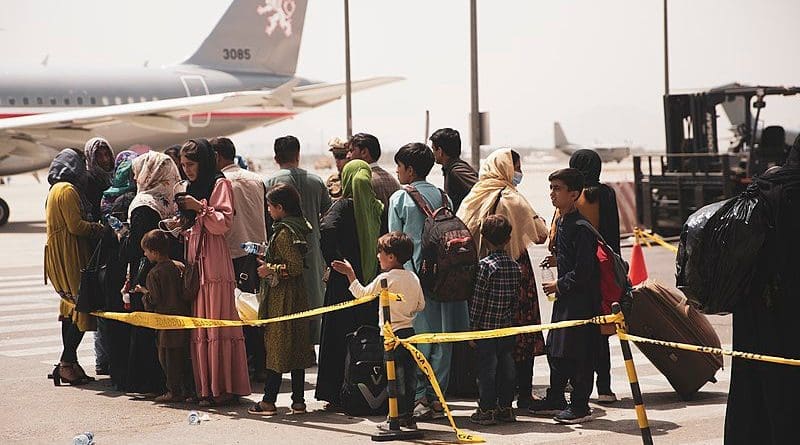US Central Command Releases Report On August Abbey Gate Attack In Afghanistan
By DoD News
By Jim Garamone
The attack on Abbey Gate that killed American service members and around 170 Afghan civilians during the non-combatant evacuation of Kabul on Aug. 26, was not a complex attack, Marine Corps Gen. Frank McKenzie, the commander of U.S. Central Command, said.
McKenzie and a team of U.S. Central Command leaders presented the results of an investigation into the Islamic State of Iraq and Syria–Khorasan attack on Hamid Karzai International Airport as U.S. service members worked to evacuate American citizens and Afghans at particular risk from a Taliban-controlled government in Afghanistan.
A total of 11 Marines, a soldier and a sailor were killed in the ISIS-K attack with a total of 45 wounded.
Contrary to first reports, it was not a complex attack. “The investigation found that a single explosive device killed at least 170 Afghan civilians and 13 U.S. service members by explosively directing ball bearings through a packed crowd into our men and women at Abbey Gate,” McKenzie said. “The investigation found no definitive proof that anyone was ever hit or killed by gunfire either U.S. or Afghan. This conclusion was based upon the careful consideration of sworn testimony of more than 100 witnesses, and especially those witnesses and Observation Towers — both American and British — who were in locations unaffected by the blast, and that had commanding views of the scene before, during and after the explosive attack.”
This is counter to what leaders believed on the day of the attack. “At the time, the best information we had … indicated that it was a complex attack by both a suicide bomber and ISIS-K gunmen,” the general said. “We now know that the explosively fired ball bearings cause wounds that look like gunshots, and when combined with a small number of warning shots, that lead many to assume that a complex attack had occurred. The fact that this investigation has contradicted our first impression demonstrates to me that the team went into this investigation with an open mind in search of the truth.”
The investigators found that military leadership on the ground was appropriately engaged in force protection measures throughout the operation of Abbey Gate. They also found that the medical services that were available and ready, “saved every life they possibly could through heroic efforts,” McKenzie said.
The investigators came from all services and were led by Army Lt. Gen. Ron Clark, the commander of 3rd Army and Army Forces Central Command. Their task was large, and they examined tactical-level actions at Abbey Gate including gate operations, force protection, force posture, leadership, unit readiness and any relevant actions before, during and after the attack.

